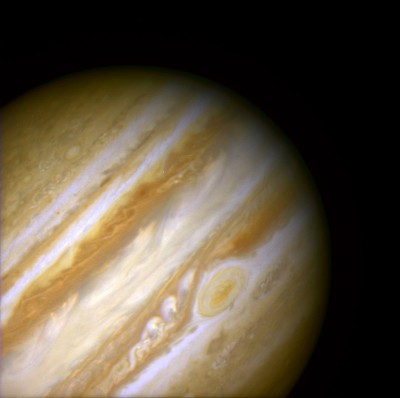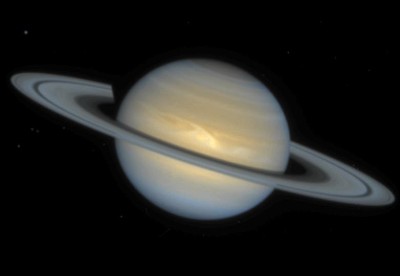 
J. Marvin Herndon's Feasibility of Nuclear Reactors in the Giant Outer Planets |
|
|
The explanation proffered for two decades by NASA scientists, that the radiated energy was left over from planetary formation, did not make sense to J. Marvin Herndon, pictured at right, because Jupiter is 98% a mixture of hydrogen and helium, excellent heat transport media, and Neptune is only 5% the mass of Jupiter. In a flash of inspiration, the pieces all fell into place, the lessons of Oklo began to make sense on a grander, planetary scale. Herndon worked out the physics, using Fermi's nuclear reactor theory, as Kuroda had done, and in 1992 published a scientific article entitled "Feasibility of nuclear fission reactors as energy sources for the giant outer planets" in Naturwissenschaften [1]. |
|
Initially, Herndon considered only thermal neutron reactors moderated by hydrogen for the giant planets, but soon realized that hydrogen was not necessary; planetocentric nuclear fission reactors would function quite well as fast neutron breeder reactors. That insight opened the door to the possibility of nuclear reactors at the centers of non-hydrogenous planets. New advances often beget further advances. And that was the case here as can be seen by checking out other web-pages on this site: (click here) or (click here), for example, or, see [2-11]. |
|
References |
|
| 1. |
Herndon, J. M., Nuclear fission reactors as energy sources for the giant outer planets. Naturwissenschaften, 1992, 79, 7-14. |
| 2. | Herndon, J. M., Feasibility of a nuclear fission reactor at the center of the Earth as the energy source for the geomagnetic field. Journal of Geomagnetism and Geoelectricity, 1993, 45, 423-437. (click here for pdf) |
| 3. | Herndon, J. M., Planetary and protostellar nuclear fission: Implications for planetary change, stellar ignition and dark matter. Proceedings of the Royal Society of London, 1994, A455, 453-461. (click here for pdf) |
| 4. | Herndon, J. M., Sub-structure of the inner core of the Earth. Proceedings of the National Academy of Sciences USA, 1996, 93, 646-648. (click here for pdf) |
| 5. | Herndon, J. M., Examining the overlooked implications of natural nuclear reactors. Eos, Transactions of the American Geophysical Union, 79, 451, 456. (click here for pdf) |
| 6. | Hollenbach, D. F. and Herndon, J. M., Deep-Earth reactor: Nuclear fission, helium, and the geomagnetic field. Proceedings of the National Academy of Sciences USA, 2001, 98, 11085-11090. (click here for pdf) |
| 7. |
Herndon, J. M., Nuclear georeactor origin of oceanic basalt 3He/4He, evidence, and implications. Proceedings of the National Academy of Sciences USA, 2003, 100, 3047-3050. (click here for pdf) |
| 8. | Herndon, J. M., Nuclear georeactor generation of the Earth's geomagnetic field. Current Science, 2007, 93, 1485-1487. (click here for pdf) |
| 9. | Herndon, J. M., Maverick's Earth and Universe. 2008, Vancouver: Trafford Publishing. ISBN 978-1-4251-4132-5. |
| 10. | Herndon, J. M., Nature of planetary matter and magnetic field generation in the Solar System. Current Science, 2009, 96, 1033-1039. (click here for pdf) |
| 11. | Herndon, J. M., Uniqueness of Herndon's georeactor: Energy source and production mechanism for Earth's magnetic field. arXiv:0901.4509 28 Jan 2009. (click here for pdf) |


 Herndon realized that, inside the giant planets,
density of an element is a function almost entirely of atomic number and atomic
mass, meaning that uranium would be most dense and would tend to concentrate at
the planet's center by gravity. Billions of years ago, nuclear fission chain
reactions could begin in the concentrated uranium and could continue into the
present, as implied by Oklo observations, through fuel breeding reactions.
Herndon also realized that, with planetocentric reactors, there is a natural
mechanism for removing fission products, which if left in place could shut down
neutron chain reactions; the fission products would be roughly half the atomic
number and atomic mass as uranium and thus would tend to migrate outward as the
uranium tended to migrate inward.
Herndon realized that, inside the giant planets,
density of an element is a function almost entirely of atomic number and atomic
mass, meaning that uranium would be most dense and would tend to concentrate at
the planet's center by gravity. Billions of years ago, nuclear fission chain
reactions could begin in the concentrated uranium and could continue into the
present, as implied by Oklo observations, through fuel breeding reactions.
Herndon also realized that, with planetocentric reactors, there is a natural
mechanism for removing fission products, which if left in place could shut down
neutron chain reactions; the fission products would be roughly half the atomic
number and atomic mass as uranium and thus would tend to migrate outward as the
uranium tended to migrate inward.